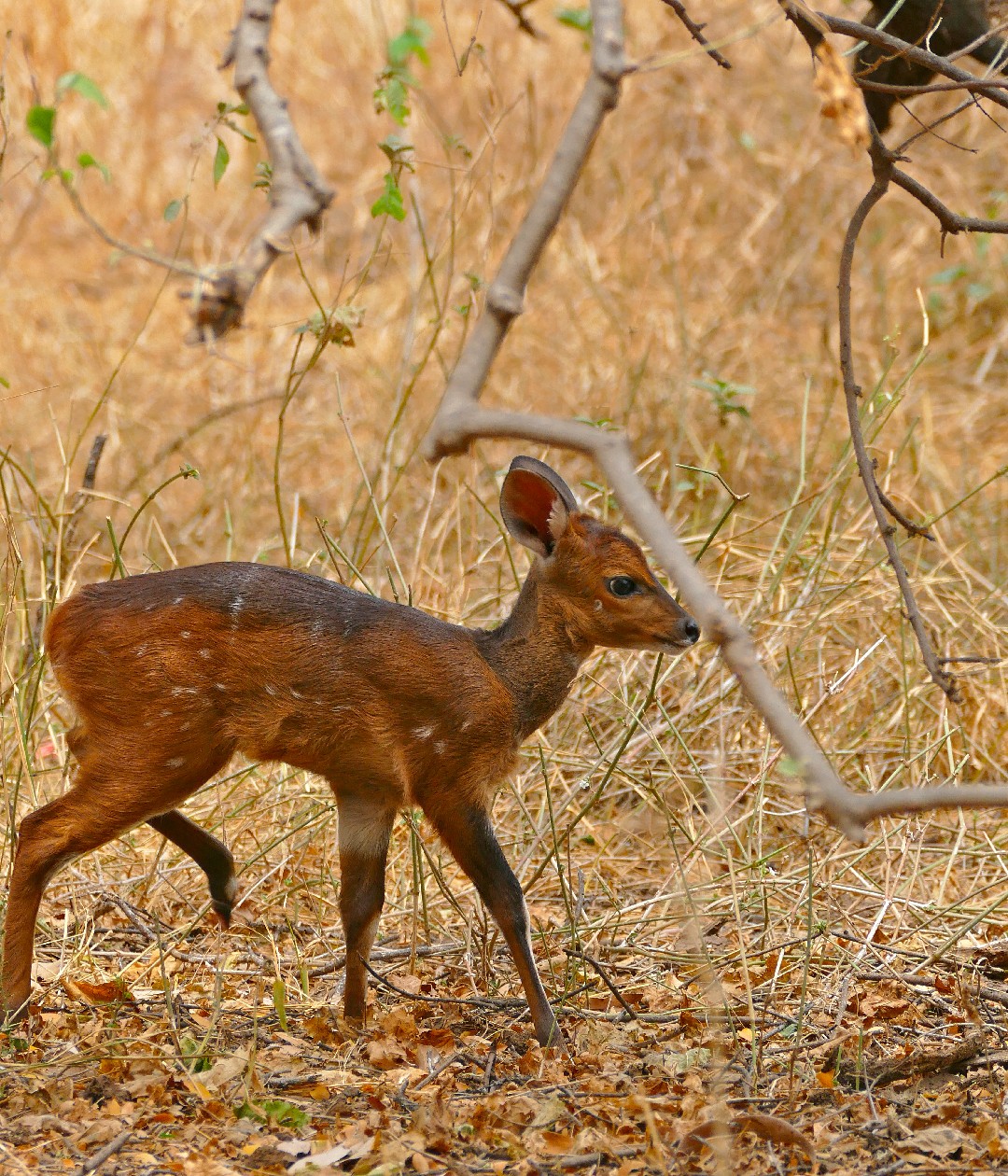Harnessed bushbuck
A species of Elands, Also known as Bushbuck Scientific name : Tragelaphus scriptus Genus : Elands
Harnessed bushbuck, A species of Elands
Also known as:
Bushbuck
Scientific name: Tragelaphus scriptus
Genus: Elands
Content
Description General Info
 Photo By Bernard DUPONT , used under CC-BY-SA-2.0 /Cropped and compressed from original
Photo By Bernard DUPONT , used under CC-BY-SA-2.0 /Cropped and compressed from original Description
The color and pattern of the bushbucks vary greatly by region, from light to dark brown to reddish brown and from some light spots to numerous white stripes and spots. All animals have a striking white marking on the neck and chest, which varies depending on the species. The males have 50 cm long, sharp, curved horns and a mane running along the backbone. This can be displayed upright. The adult animals reach a body length of 1.1 to 1.5 m and a weight between 25 and 80 kg, with a shoulder height of 75 to 110 cm. Males are significantly larger and darker than females.
General Info
Lifespan
10-15 years
Diet
Harnessed bushbuck predominantly subsists on foliage, consuming a mix of leaves, twigs, flowers, and fruits. This browser's dietary preference varies with seasonal availability, often favoring fruits during wet seasons and leaves in dry periods.
Appearance
Harnessed bushbuck is a medium-sized ungulate, covered with a coat of short, smooth fur. Its colouration ranges from yellowish-brown to a darker, almost black shade. It displays distinctive white stripes and splotches, creating a kind of script-like pattern across its body. The males possess long, spiralled horns. Adults are larger and darker than juveniles, and the species shows sexual dimorphism with males being notably larger than females.
Behavior
Harnessed bushbuck is usually solitary with diurnal habits, predominantly foraging in early morning and late afternoon. The species displays an impressive adaptive nature in eating, consuming both plant and insect resources. Individuals mark territories with preorbital gland secretions and exhibit aptitude for swimming and leaping for environmental adaptation.
Population
Stable